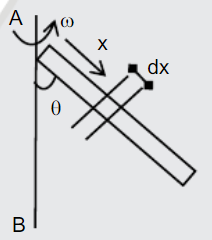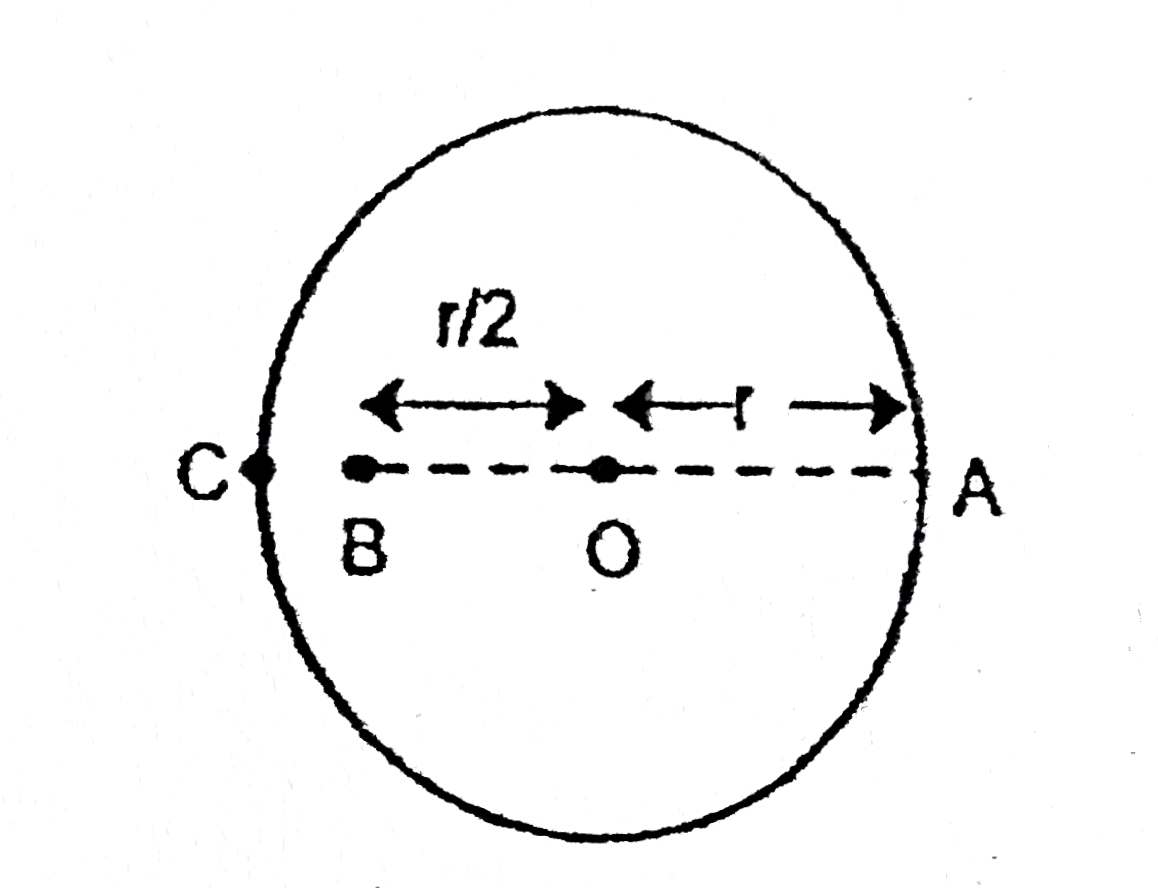A body is in pure rotation. The linear speed 'v' of a particle, the distance 'r' of the particle from the axis and the angular velocity ω of the body are related as ω=vr. Thus
ω∝1r
ω∝r
ω=0
ω is independent of r
The correct Answer is:D
To solve the problem, we need to analyze the relationship between angular velocity (ω), linear speed (v), and the distance from the axis of rotation (r) in a body undergoing pure rotation.
1. Understanding the Relationship:
We start with the given relationship:
ω=vr
where:
- ω = angular velocity
- v = linear speed of a particle
- r = distance of the particle from the axis of rotation
2. Rearranging the Equation:
We can rearrange the equation to express linear speed in terms of angular velocity and distance:
v=ω⋅r
3. Analyzing Angular Velocity:
In pure rotation, the angular velocity ω is constant for all particles in the body. This means that regardless of the distance r from the axis of rotation, the value of ω does not change.
4. Determining the Relationship:
Since ω is constant, we can conclude that:
- As r increases, v must also increase proportionally (since v=ω⋅r).
- However, ω itself does not depend on r.
5. Conclusion:
Therefore, we can conclude that angular velocity ω is independent of the distance r from the axis of rotation.
Final Answer:
From the analysis, we find that the correct option is:
- Option 4: ω is independent of r.
We start with the given relationship:
ω=vr
where:
- ω = angular velocity
- v = linear speed of a particle
- r = distance of the particle from the axis of rotation
We can rearrange the equation to express linear speed in terms of angular velocity and distance:
v=ω⋅r
In pure rotation, the angular velocity ω is constant for all particles in the body. This means that regardless of the distance r from the axis of rotation, the value of ω does not change.
Since ω is constant, we can conclude that:
- As r increases, v must also increase proportionally (since v=ω⋅r).
- However, ω itself does not depend on r.
Therefore, we can conclude that angular velocity ω is independent of the distance r from the axis of rotation.
From the analysis, we find that the correct option is:
- Option 4: ω is independent of r.
Topper's Solved these Questions
- ROTATIONAL MECHANICSBOOK - HC VERMA ENGLISHCHAPTER - ROTATIONAL MECHANICSEXERCISE - Objective -2
14 Videos
- ROTATIONAL MECHANICSBOOK - HC VERMA ENGLISHCHAPTER - ROTATIONAL MECHANICSEXERCISE - Exercises
86 Videos
- ROTATIONAL MECHANICSBOOK - HC VERMA ENGLISHCHAPTER - ROTATIONAL MECHANICSEXERCISE - worked out Examples
29 Videos
- REST AND MOTION : KINEMATICSBOOK - HC VERMA ENGLISHCHAPTER - REST AND MOTION : KINEMATICSEXERCISE - Question for short Answer
13 Videos
- SIMPLE HARMONIC MOTIONBOOK - HC VERMA ENGLISHCHAPTER - SIMPLE HARMONIC MOTIONEXERCISE - Question for short Answer
15 Videos
Similar Questions
A rod is rotating with angular velocity ω about axis AB. Find cosθ.

View SolutionThe linear velocity perpendicular to radius vector of a particle moving with angular velocity ω=2ˆK at position vector r=2ˆi+2ˆj is
View SolutionA particle is rotating in circle with uniform speed as shown. The angular momentum of the particle w.r.t. origin is :-

View SolutionAll the particles of a body situated at distance R from the origin. The distance of the center of mass of the body from the origin is
View SolutionWhat is the angular velocity of a particle lying on the axis of rotation ?
View SolutionWhat is the angular velocity of a particle lying on the axis of rotation ?
View SolutionThe position vector of a particle is r=asinωtˆi+acosωtˆj
The velocity of the particle is
View SolutionA particle is revolving in a circle of radius r and centre at 'O' with uniform angular velocity ω. Choose the correct option(s) :

View SolutionAll the particles of a body are situated at a distance R from the origin. The distance of the centre of mass of the body from the origin is
View SolutionThe angular velocity of a particle moving in a circle realative to the center of the circle is equal to ω. Find the angular velocity of the particle relative to a point on the circular path.
View Solution
